
Port
Port or porto is a fortified sweet red, white or rosé wine from Portugal, with an alcohol content between 18 and 20 percent and is drunk as an aperitif, digestive or dessert wine. Port must be made from grapes grown in a defined wine region along the banks of the Douro River. Although nowadays fortified wine is produced all over the world, very similar to port, with Australia and South Africa being the biggest, in the European Union only the product from Portugal is allowed to carry the label “port.
History of Port
The name port is derived from the port city of Porto. In the 13th and 14th centuries, wine was already being exported from Portugal to England. When the English lived in discontent with the then already widely wine-producing country of France, the English sought wine from others. To keep Portuguese wine good during the long sea voyage, some brandy was added at the end of the preparation. At the end of the 18th century, they proceeded to stop the fermentation by adding wine alcohol, so that not all the sugars were converted into alcohol and the sweet taste was preserved. (The mutage technique) By adding alcohol, the alcohol percentage became higher; between 19-22%.
Geography of port
De Dourovallei ligt aan de bovenloop van de rivier de Douro in het noordoosten van Portugal. Deze vallei is ingedeeld in verschillende wijngaarden, de quinta’s. Een quinta heeft in deze vallei veelal de functie van duiventeelt. Veel wijngaarden verbouwen druiven voor port-wijnhuizen in Porto en Vila Nova de Gaia. Een klein aantal daarvan maakt hun eigen port. Deze worden Single Quinta Port genoemd. De wijngaarden zijn terrasvormig –soms heel steil- aangelegd op de flanken van de vallei. In 2001 is deze streek is door UNESCO werelderfgoed uitgeroepen. De classificatie port-wijngaarden rangschikt de 26.000 hectare wijngaarden, waarop druiven voor de productie van port mogen worden verbouwd.
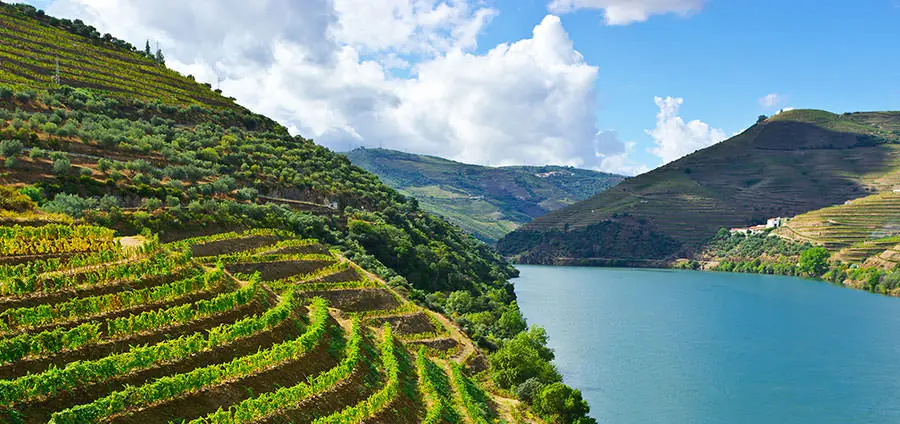
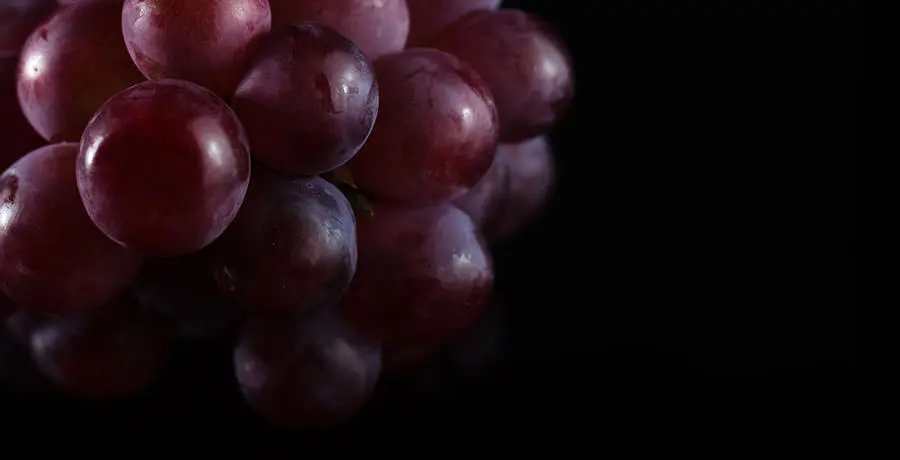
Grapes used with Port
Well-known grape varieties for making port are:
Touriga Nacional
Tinta Roriz
Tinta Barroca
Tinta Cão
Tinta Francisca
Tinto Rouro
Bastardo
Donzelinho Tinto
Mourisco
Malvasia Fina (used for white port).
Production of Port
When the grapes arrive from the vineyard, no or partial destemming is chosen. The grapes must be harvested on the same day. Treading in lagares (low granite stone troughs) is still practiced today, along with modern winemaking systems. This old-fashioned ritual is a tough job that takes place in the evening hours after harvest. Nowadays, there are also machines that take over the work of the treaders (human feet).
The pressure of treading causes the cell wall to break, imparting its flavor and color which is more than essential in port wine. After a day or two, alcoholic fermentation occurs, causing the skins to create a blanket (manta) on top of the mass. This provides a protective layer that blocks contact with oxygen. The manta is dipped regularly to get the extraction as full as possible.
If the must is good after analysis and to the winemaker’s liking, the brandy (aguardente) can be added. This stops fermentation and the wine can be put into the barrel from the bottom of the lagaras. This barrel consists of 1/5 wine alcohol that is supplemented with the port wine, giving it an alcohol content of 19% to 20%.
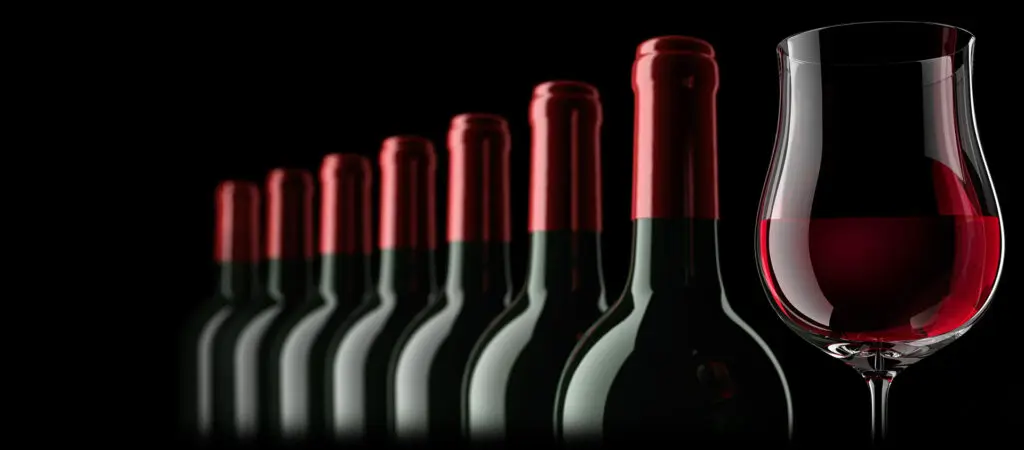
Types of Port
There is red, white and rosé port. Red and rosé port are made from red grapes, white port from white grapes. Most types are assemblages (blends) of different years, vineyards and grape varieties.
There are several ports. The most common subdivision is the Ruby, vintage, tawny, white and, more recently, rosé port.
Ruby
Ruby port is the most common. This relatively young port has been stored in barrel for 2 to 3 years. Usually these are stainless steel tanks or concrete tanks. In some cases it is aged in oak barrels. Ruby port is blended (composed) by mixing grapes from multiple grape varieties, vintages and vineyards.
With red port, the degree of aging is important; more oxygen changes the color and aroma of the wine. If the port is aged in wooden cuves (barrels) or in large cuves, more oxidation takes place. If the port is relatively young, it will have a dark red color (‘ruby’). If the port has been in wood much longer and has had more contact with oxygen, it will have a lighter, orangey color (‘tawny’).
Ruby Reserva
The reserva is in barrel for between three and five years and has a more aromatic, fruity and complex structure.
Tawny Port
The Tawny Port is a blend of ports from different vintages, named after the tawny color, which results from the wine being aged in barrel for several years, allowing it to oxidize slightly. The tawny port is lighter in color and softer in flavor than the ruby` because it has been in wood longer, usually 3 years. Tawny reserva is between 5 and 7 years in barrel and has a more aromatic, fruity and complex structure.
Aged Tawny Port
The best tawny’s remain in wood longer. In the case of the Aged Tawny, the bottle shows the number of years the port has been aged in barrels, giving the typical tawny color. Since this is a blend of ports, the age listed on the bottle refers to the average age of the blend. The use of the age indication requires permission from the Instituto dos Vinhos Douro e Porto.
Crusted port
This port is composed of port from 3 to 4 years of wood-aged port from multiple vintages. This is then bottled unfiltered, forming a sediment, a “crust. Like vintage port, it must be decanted before it is fit for consumption. This type of port is also called the “poor man´s” vintage port.
Vintage port
This port is of the highest quality, made from the harvest of 1 year from the best vineyards. Only after strict inspection by the Instituto dos Vinhos Douro e Porto and issuance of this quality seal may the port bear this name. On average about 3 times per decade, the grape harvest is found to be so good that that specific year is declared a vintage port year by the IVDP (Instituto dos Vinhos do Douro e do Porto). Each port house is free, even in non-declared vintage years, to offer port to the IVDP for testing. If it meets the strict qualifications, this port house may also be allowed to use the label vintage port for this wine. Usually this is a so-called Single Quinta Vintage Port. The wine for vintage port is bottled young , in such a way that they can continue to age in bottle and form a deposit/dryness in the bottle, sometimes as long as 40 years. The label shows not only ‘Vintage’ but also the vintage. The longer the bottle matures, the softer the flavor.
De vintage years
The years below are the general declared vintage port years of the past 60 years: 2011, 2009, 2008, 2007, 2003, 2000, 1997, 1994, 1992, 1991, 1989, 1987, 1985, 1983, 1982, 1980, 1978, 1977, 1975, 1970, 1966, 1963, 1960, 1958, 1955, 1950, 1948, 1947, 1945.
The drinking temperature is about 18°C. Because of its relatively low tannin content, vintage port oxidizes relatively quickly. In practice, this means that vintage port should be drunk within 48 hours, after which the quality deteriorates noticeably. Because vintage port can be stored for a very long time, it can happen that the cork is in very poor condition. In order to still be able to open the port properly, a method has been developed using a so-called port tong. The tongs are heated until they are red hot. Then the pliers are clamped around the neck (under the cork) for some time, only to cool this neck with a very cold wet cloth. The neck then breaks at the point of heating.
Late bottled vintage(LBV)
Late bottled vintage is a blend of ports from the same year. The label must always indicate the vintage and the year of bottling. LBV Port is aged, before bottling, in oak barrels between 4 and 6. Most of these LBVs are ripe for drinking after this.
Single Quinta Vintage Port
The Single Quinta Vintage Port is a vintage port that comes from a single vineyard. The vineyard must be listed on the bottle. These Single Quinta Vintage Ports may occur in years that are not considered vintage years. Again, the label states the vintage year and the year of bottling.
Colheita port
This port consists of the harvest of a single year. The word “colheita” means vintage. It must have aged for at least 7 years in a wooden barrel. It is tawny in color and is ready to be drunk immediately after bottling. The vintage and the number of years the port has aged in the barrel are indicated on the bottle. Colheitas are considered high-quality tawny wines.
Garrafeira port
The Garrafeiraport is also a blend of ports from a single year. The Garrafeira is sometimes called “the bridge between the tawny and the vintage. After a short aging period in wooden barrels, the wine is transferred to large glass vats, in which the wine continues to slowly age for 20, 30 to 40 years. Over the years, a sediment forms that necessitates decanting before the port is bottled. The port continues to age in the bottle.
Blanco port
White port is made exclusively from white grapes and aged for three years in barrel. The taste ranges from extra dry to very sweet. The reserva branco has been in barrel for at least 7 years, is golden in color and complex in flavor. White port is often drunk in Portugal as a mix with 1/3 white port, 2/3 tonic and a slice of lemon.
Rosé port
Rosé port has only been legally recognized as an official port type since May 21, 2009. Unlike the other types of port, rosé port is not wood-aged and is therefore slightly livelier, fresher and fruitier in style.
Pouring port
It is recommended to decant the port so that the sediment remains in the bottle before serving. A typical Portuguese custom is, after decanting a bottle of vintage port, to refill the bottle with a significantly less rich ruby port. This port will also have more “body” this way. The special character of vintage port requires careful handling prior to drinking. The bottle should have stood upright for at least 24 hours before opening to ensure that the deposit has settled at the bottom of the bottle. Decanting into a decanter should be done several hours before consumption, leaving an amount of one to two glasses in the bottle to be sure that no deposit will accompany the wine. The duration of decanting decreases the longer the Port has aged.
Leeftijd:
7 jaar of jonger: 10 – 12 uur
8 – 15 jaar oud : 8 – 10 uur
16 – 25 jaar oud: 6 – 8 uur
26 – 35 jaar oud: 4 – 6 uur
36 – 45 jaar oud: 3 – 5 uur
46 – 60 jaar oud: 2 – 3 uur
60 jaar en ouder: 1 – 3 uur
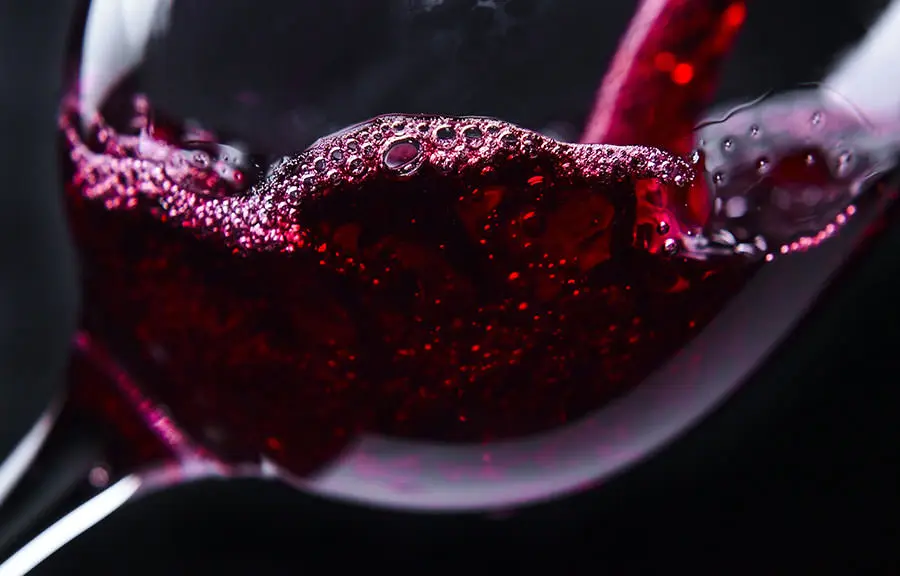
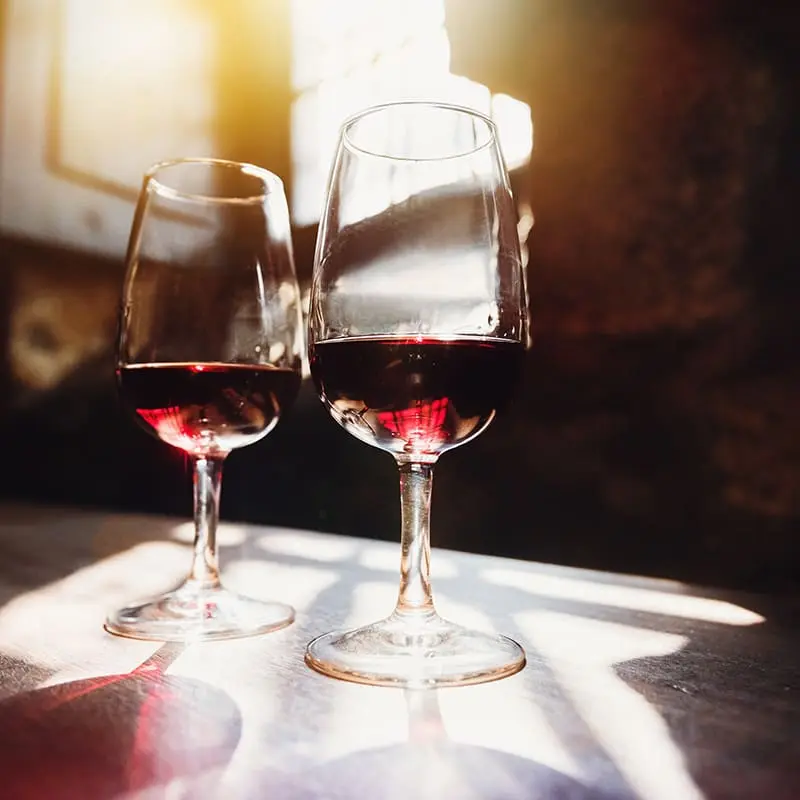
Order your Port wine
Are you excited and want to taste the best Port? Tasting Collection offers grat Port.
